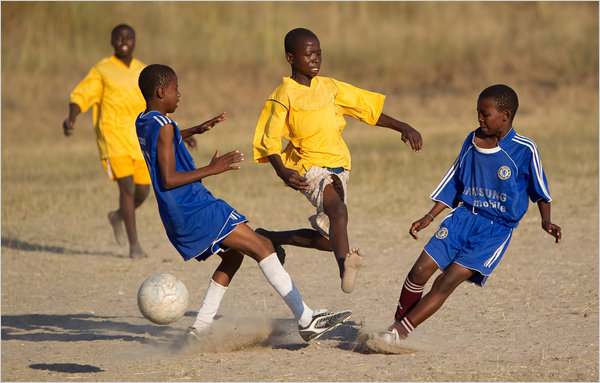For decades, Africa was seen as football’s endless fountain of raw talent — gifted players discovered in dusty training fields, quickly exported to European academies, often before their potential was fully realized at home.
But that narrative is changing. Today, African football is not merely a source of talent; it’s becoming a force in global strategy, investment, and identity.
From the bustling youth academies of Dakar and Lagos to the modernized leagues of Morocco, Egypt, and South Africa, a quiet revolution is underway — one that could reshape the global football economy over the next decade.
The Talent Factory That Never Sleeps
No continent produces natural football ability quite like Africa. The combination of athleticism, flair, creativity, and street-learned resilience has given rise to world-class players:
Didier Drogba, Samuel Eto’o, Mohamed Salah, Sadio Mané, Victor Osimhen — all symbols of how far African footballers have climbed.
Yet what’s striking in recent years is not just individual brilliance, but systemic development.
Countries such as Senegal, Nigeria, Ghana, and Côte d’Ivoire have established professional training centers that rival their European counterparts.
Senegal’s Diambars Academy and Ghana’s Right to Dream have become pipelines to elite European clubs — producing disciplined, tactically aware players ready to thrive under high-pressure conditions.
Unlike in the past, where young players often left with little guidance, today’s academies negotiate structured transfer deals, secure education for players, and reinvest profits into local infrastructure.
African football is learning to profit from its own excellence.
Tactical Evolution: Beyond Raw Energy
African football used to be stereotyped as physical, emotional, and unpredictable — a showcase of passion rather than precision.
But watch Morocco’s World Cup run in 2022, Senegal’s AFCON triumph, or the fluid systems of Al Ahly and Mamelodi Sundowns, and you’ll see something new: structure, positional discipline, and tactical intelligence.
Modern African coaches — many trained in Europe or South America — have fused continental creativity with tactical science.
Pressing systems, ball circulation, compact defense, and transitional speed now define teams once labeled “chaotic.”
At the same time, there’s a growing sense of tactical identity — a distinctly African balance between physical intensity and technical artistry.
In short: Africa is no longer just catching up tactically; it’s innovating.
The Transfer Economy: Power, Politics, and Profit
Where there’s talent, there’s a market — and Africa’s transfer ecosystem is now worth hundreds of millions annually.
But beneath the glamour lies a new sophistication in management.
European clubs no longer rely solely on agents or “talent hunters.”
Instead, scouting networks, analytics firms, and partnerships with local academies drive recruitment.
Clubs like Red Bull Salzburg, Lille, and Brighton & Hove Albion have built data-driven systems specifically targeting undervalued African talent.
Meanwhile, African clubs are learning to retain value.
The Moroccan Botola and South African PSL, supported by better sponsorships and broadcasting deals, now hold players longer and sell smarter — transforming transfers from exploitation into negotiation.
This economic maturity signals a shift in power: Africa is not merely exporting labor; it’s participating in the global football market as a stakeholder.
The Infrastructure Gap — and the Coming Investment Wave
The next frontier is infrastructure. Despite progress, many African clubs still lack stable financing, reliable stadiums, and consistent management.
But momentum is building.
The CAF Super League, backed by FIFA, aims to commercialize African club football at scale, attracting sponsors and international audiences.
At the same time, private investors from Europe, the Middle East, and the U.S. are showing growing interest in African teams — a trend reminiscent of how venture capital entered European football 20 years ago.
For investors, Africa is football’s next growth market:
low entry cost, massive fan base, and global export potential.
Culture, Pride, and the Future
Beyond economics and tactics lies something deeper: cultural confidence.
African players no longer see Europe as the ultimate validation of their worth. Many return home to invest in academies, sponsor youth tournaments, and raise standards domestically.
Players like Mané in Senegal, Eto’o in Cameroon, and Drogba in Côte d’Ivoire are not just legends — they are architects of the next generation.
As African football matures, it’s redefining global narratives:
from talent supply to strategic player development, from reactive to proactive, from participant to pioneer.
A Continent Ready to Compete
The rise of African football is no longer a dream — it’s data.
Youth academies are producing elite talent; tactical systems are modernized; transfer economies are professionalized.
With the 2030 World Cup on the horizon and growing international investment, Africa’s role in football’s future is no longer on the sidelines.
It’s on the pitch, in the boardroom, and increasingly — at the center of the global game.








Laisser un commentaire